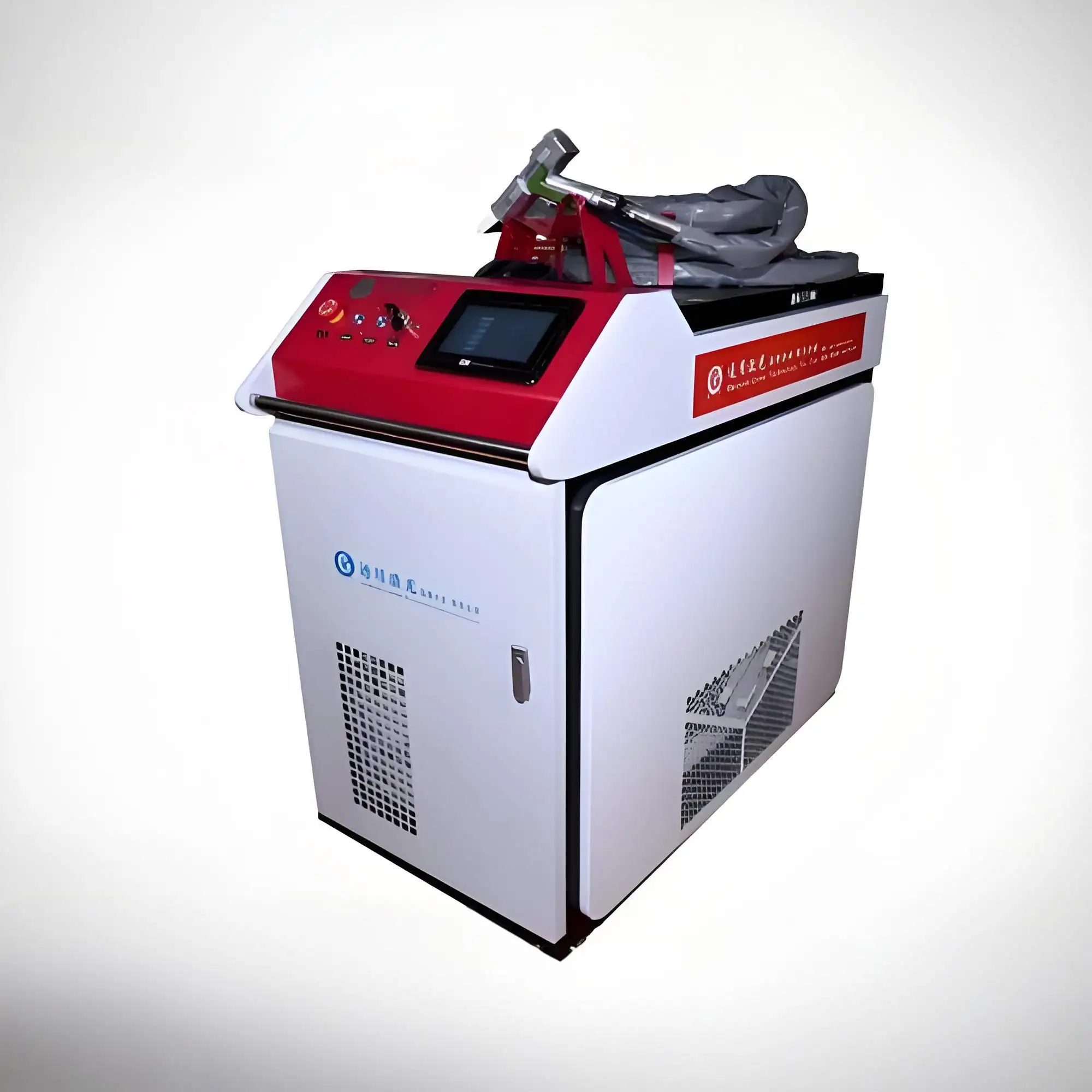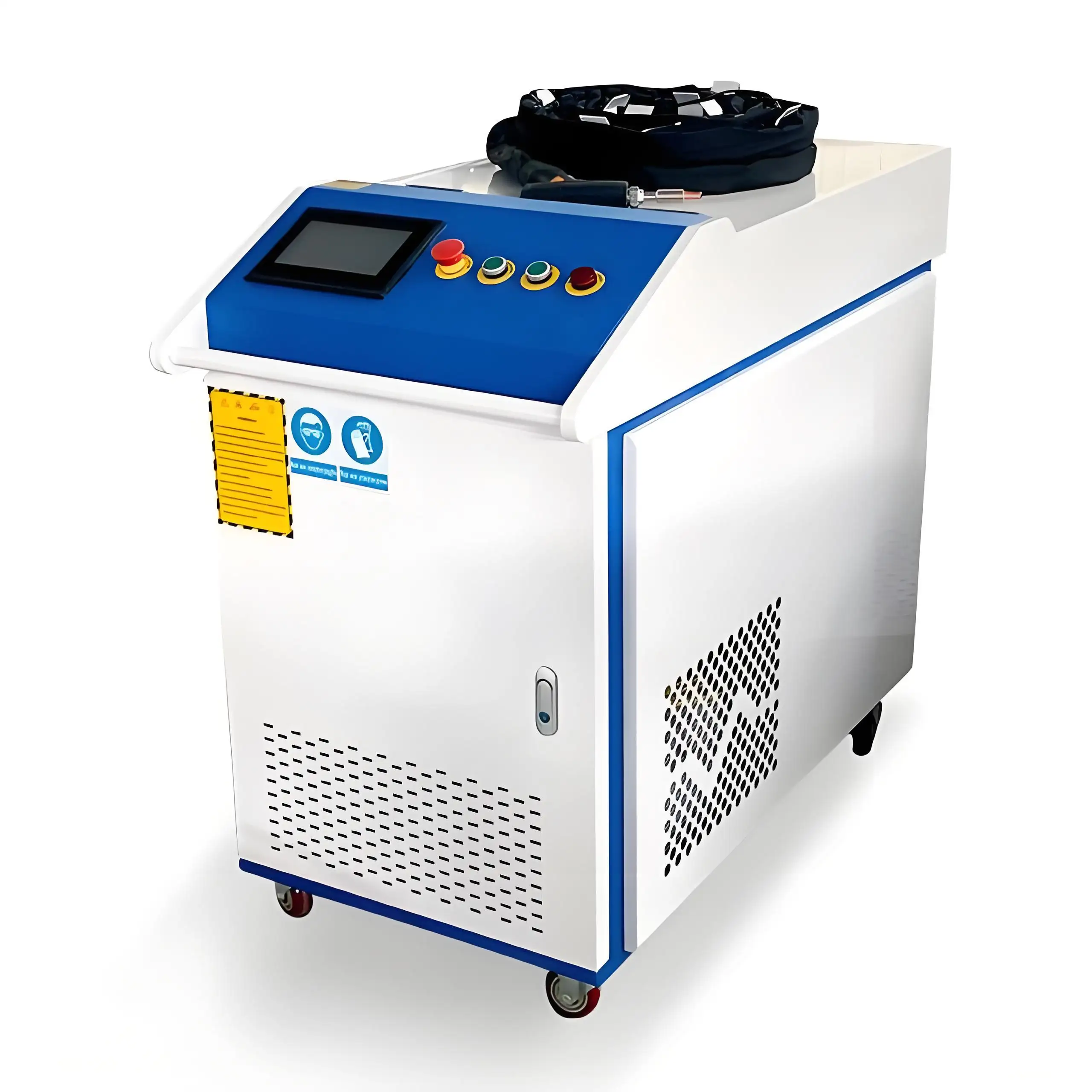As someone who’s been in the industrial cleaning and maintenance industry for over 15 years, I’ve worked with countless tools and technologies, from sandblasters to chemical strippers. But few innovations have sparked as much curiosity as laser rust removal machines. These devices, which use focused laser beams to vaporize rust and contaminants, are a game-changer for precision and eco-friendliness. However, one question I hear often from clients in industries like manufacturing, shipbuilding, and oil and gas is whether these machines can hold up in high-temperature environments. Drawing from my experience and hands-on work with laser systems, I’ll dive into this topic, exploring the technology, its limitations, and practical considerations to help you decide if it’s right for your needs.

Understanding Laser Rust Removal Machines
Before we tackle their performance in high temperatures, let’s ground ourselves in what these machines do. Laser rust removal uses a high-energy laser beam to ablate rust, paint, or other surface contaminants from metal without damaging the substrate. The process is non-contact, produces minimal waste, and is far more environmentally friendly than traditional methods like abrasive blasting or chemical treatments.
I’ve seen these machines shine in applications like restoring vintage car parts, cleaning ship hulls, and prepping industrial equipment for maintenance. But their suitability in hot environments—think steel mills, engine rooms, or desert-based operations—depends on several factors, including the machine’s design, operating conditions, and maintenance protocols. Let’s break it down.
Key Factors Affecting Performance in High-Temperature Environments
1. Machine Design and Heat Tolerance
Laser rust removal machines vary widely in design, from portable handheld units to industrial-grade systems. Most are built with components like laser sources (fiber or pulsed lasers), cooling systems (air or water), and control electronics. The operating temperature range specified by the manufacturer is your first clue to their heat tolerance.
What I’ve seen: Most commercial laser rust removers are rated for ambient temperatures between 0°C to 40°C (32°F to 104°F). Some high-end models, like those from Laserax or CleanLASER, extend to 50°C (122°F) with enhanced cooling systems. Beyond these limits, performance can degrade—lasers may overheat, optics may misalign, or electronics may fail.
My insight: In a steel foundry I worked with, we used a 500W fiber laser in a 45°C environment. The machine’s water-cooling system kept it stable, but we had to monitor coolant levels closely. Without proper cooling, you risk shutdowns or costly repairs.
2. Cooling Systems
The cooling system is the heart of a laser rust remover’s ability to function in hot environments. Most systems use either air cooling (for lower-power units, e.g., 50W-200W) or water cooling (for high-power units, e.g., 500W-2000W). In high-temperature settings, water-cooled systems are generally more reliable.
What I’ve seen: Air-cooled units struggle above 35°C, especially in humid conditions, as fans can’t dissipate heat fast enough. Water-cooled systems, while more robust, require regular maintenance to prevent coolant evaporation or pump failure. In one desert-based project, a client’s 1000W laser failed because dust clogged the cooling vents—a reminder to check environmental compatibility.
My insight: If you’re operating in temperatures above 40°C, prioritize water-cooled models and ensure a steady supply of coolant. Backup cooling (e.g., external fans) can also help.

3. Laser Source and Optics Durability
The laser source (typically a fiber laser) and optics (lenses and mirrors) are sensitive to heat. Prolonged exposure to high ambient temperatures can cause thermal expansion, reducing beam accuracy or damaging components.
What I’ve seen: In a shipyard where ambient temperatures hit 50°C, a 200W handheld laser’s optics fogged up due to condensation from rapid temperature changes. Industrial-grade systems with sealed optics and temperature-resistant coatings performed better under similar conditions.
My insight: Look for machines with IP54 or higher ratings for dust and moisture resistance, especially in hot, dusty environments. Regular cleaning of optics is non-negotiable.
4. Duty Cycle and Heat Buildup
The duty cycle—how long the machine can run continuously—matters in high-temperature settings. Constant operation generates internal heat, which compounds external heat stress.
What I’ve seen: A client in an oil refinery used a 1000W laser for 6-hour shifts in 48°C conditions. The machine’s duty cycle was rated for 80% at 40°C, but it overheated after 4 hours without breaks. We adjusted the workflow to include 10-minute cool-down periods, which solved the issue.
My insight: Check the duty cycle in the spec sheet and plan for rest periods if you’re pushing the machine in extreme heat.
5. Environmental Factors Beyond Temperature
High-temperature environments often come with dust, humidity, or vibrations, which can affect laser performance. For example, in a Middle Eastern fabrication shop I visited, fine sand particles infiltrated a laser’s housing, causing intermittent shutdowns.
What I’ve seen: Machines with robust enclosures (e.g., IP65-rated) and air filtration systems fare better in such conditions. Humidity above 70% can also cause condensation inside the laser head, so dehumidifiers or climate-controlled workspaces are sometimes necessary.
My insight: Always assess the full environment—temperature, dust, and humidity—before deploying a laser rust remover.

Practical Considerations for High-Temperature Use
Based on my experience, here are practical steps to ensure a laser rust removal machine performs well in hot environments:
Check Manufacturer Specs: Look for the maximum operating temperature and cooling requirements. If the spec sheet doesn’t list a high enough range (e.g., 45°C+), contact the manufacturer for real-world data.
Invest in Cooling: Opt for water-cooled systems for temperatures above 40°C. Ensure coolant is topped up and filters are clean. For air-cooled units, add external fans or air conditioning in extreme heat.
Protect Optics: Use machines with sealed, temperature-resistant optics. Schedule regular cleaning to prevent dust or residue buildup.
Plan Work Cycles: Avoid running the machine beyond its duty cycle. In hot environments, shorter bursts with cool-down periods extend lifespan.
Control the Environment: If possible, use dust covers, air filtration, or climate-controlled enclosures to mitigate heat, dust, and humidity.
Table: Key Specifications for High-Temperature Suitability
Here’s a concise table summarizing the critical specs to check for high-temperature environments, based on my field experience:
| Specification | What to Check | Why It Matters | Ideal Range/Value |
|---|---|---|---|
| Operating Temperature | Max ambient temperature rating | Ensures reliable performance in heat | 40°C to 50°C+ |
| Cooling System | Air vs. water cooling | Affects heat dissipation in hot settings | Water-cooled for >40°C |
| IP Rating | Dust and moisture resistance | Protects against environmental stress | IP54 or higher |
| Duty Cycle | Continuous operation limit at max temp | Prevents overheating during long use | 80%+ at 40°C |
Limitations and Risks in High-Temperature Environments
While laser rust removal machines are robust, they’re not invincible in extreme heat. Here are some risks I’ve encountered:
Overheating: Exceeding the rated temperature can cause laser source failure or reduced power output. I’ve seen a 300W unit drop to 70% efficiency in 50°C heat without adequate cooling.
Component Wear: Heat accelerates wear on electronics and optics, shortening lifespan. A client in a foundry replaced a laser head after just 18 months due to constant high-temperature exposure.
Operator Safety: Hot environments increase the risk of burns from heated metal surfaces post-laser treatment. Proper training and PPE (e.g., heat-resistant gloves) are essential.
Cost Implications: High-temperature-rated machines are pricier, often costing $10,000-$50,000 for industrial models compared to $5,000 for basic units. Cooling systems and maintenance add to expenses.

My Personal Experience: A Desert Lesson
A few years ago, I consulted for a construction company in a desert region where temperatures regularly hit 48°C. They needed a laser rust remover to clean steel beams for a bridge project. We chose a 1000W water-cooled fiber laser rated for 50°C, thinking it would handle the heat. But dust was the real culprit—fine sand kept clogging the cooling system, causing shutdowns. After installing an air filtration unit and scheduling daily cleanings, the machine ran smoothly. The takeaway? Temperature is only half the battle; the full environment matters just as much.
Alternatives for Extreme Heat
If your environment exceeds the machine’s temperature limits (e.g., above 50°C), consider these alternatives:
Portable Units with Shorter Cycles: Use lower-power (e.g., 100W-200W) handheld lasers for shorter sessions, allowing cool-down periods.
Climate-Controlled Workspaces: Set up a temporary enclosure with air conditioning for critical tasks. I’ve seen this work in oil refineries where heat was a constant issue.
Traditional Methods: In extreme cases, abrasive blasting or chemical treatments might be more practical, though they’re less eco-friendly and precise.
Making an Informed Decision
Laser rust removal machines can work in high-temperature environments, but their success depends on choosing the right model and managing operating conditions. Water-cooled systems, high IP ratings, and robust duty cycles are non-negotiable for temperatures above 40°C. From my years in the field, I’ve learned that preparation—checking specs, planning maintenance, and controlling the environment—makes all the difference.
Before buying, request a demo in conditions similar to your workspace. Manufacturers like P-Laser or Adapt Laser often provide on-site trials, which I’ve found invaluable for assessing real-world performance. Also, factor in long-term costs like coolant, optics cleaning, and potential repairs when budgeting.
Wrapping Up
Laser rust removal machines are a powerful tool, but their suitability in high-temperature environments isn’t a simple yes or no. With the right model, cooling system, and maintenance plan, they can perform reliably in heat-intensive settings like steel mills or desert worksites. However, you’ll need to weigh the upfront cost and environmental challenges against the benefits of precision and eco-friendliness. By focusing on key specs and planning for your specific conditions, you can make these machines a valuable asset in even the hottest workplaces.

Related Questions and Answers
Q: Can laser rust removal machines operate in humid, high-temperature environments?
A: Yes, but humidity above 70% can cause condensation in the laser head, damaging optics. Choose models with IP65 or higher ratings and use dehumidifiers or sealed enclosures to protect the machine.
Q: How do I maintain a laser rust remover in a hot environment?
A: Clean optics and cooling vents daily to prevent dust buildup. Check coolant levels in water-cooled systems and replace filters regularly. Schedule professional servicing every 6-12 months, depending on usage.
Q: Are there specific brands better suited for high temperatures?
A: Brands like Laserax, CleanLASER, and P-Laser offer models with robust cooling and high IP ratings, ideal for temperatures up to 50°C. Always verify specs and request case studies from similar environments.
Q: What happens if a laser rust remover overheats?
A: Overheating can reduce power output, misalign optics, or shut down the machine. Prolonged overheating may damage the laser source, costing thousands in repairs. Follow duty cycle guidelines and ensure proper cooling.
Q: Are laser rust removers safe for operators in hot environments?
A: Yes, but treated surfaces can become hot, posing burn risks. Train operators to use heat-resistant gloves and allow surfaces to cool before handling. Ensure proper ventilation to manage fumes in confined, hot spaces.






